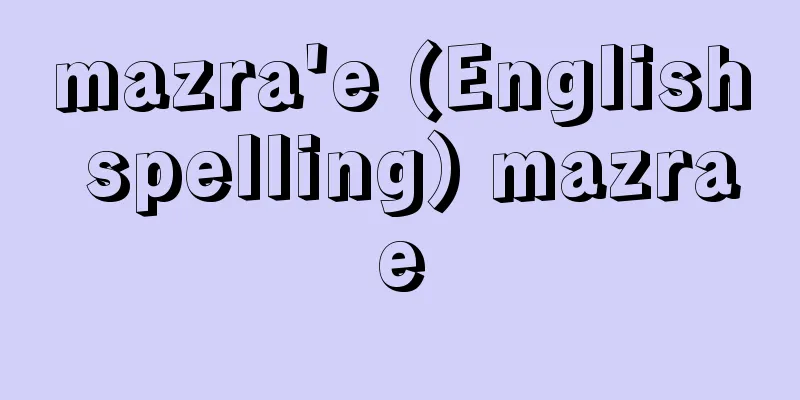Kojima Korekata

|
Year of death: July 1, 1908 (Meiji 41) Year of birth: Tempo 8.2.1 (1837.3.7) A judicial officer in the Meiji period. Born in the moat of Uwajima Castle in Iyo Province (Uwajima City) as the second son of Kaneko Tadaakira and Naoko, samurai of the Uwajima Domain. His childhood name was Masajiro, Gorobei, or Kenzo. His pen name was Tensha or Yushu. Later, he called himself Kojima Tadaken. At the end of the Edo period, he held the idea of pro-imperialism and anti-shogunate, and escaped from his domain three times. In Nagasaki, he joined the anti-shogunate movement along with Sakamoto Ryoma and others. He also served in the Boshin War. He started out as a Niigata Prefecture official in March 1869 (Meiji 2), and after serving as a junior councilor of Shinagawa Prefecture, he joined the newly established Ministry of Justice as a seventh-class official in December 1871 (Meiji 4), and thereafter pursued the path of a judicial officer. In May 1875, he was assigned to the Fukushima Superior Court, where he was in charge of a dispute over rice tax collection in the former Shonai Domain (the Tsurugaoka Incident), where he boldly conducted the trial without succumbing to intimidation, and thus gained fame. He was subsequently promoted to Chief Justice of the Nagoya Court, Chief Justice of the Supreme Court's Civil Affairs Division B, and Chief Justice of the Nagasaki Court of Appeals, and in October 1891 he was appointed Chief Justice of the Osaka Court of Appeals (reorganized as the Court of Appeals in May 1894). During his tenure in Osaka, Kojima is known for his efforts to prevent government intervention in the Osaka Liberal Party Incident, which strongly desired the imposition of explosives control penalties on Oi Kentaro and others involved, but it was the trial of the Otsu Incident (1891) that occurred immediately after he became Chief Justice of the Supreme Court that solidified his reputation. In May, the crown prince of Russia, who was visiting Japan, was injured by Tsuda Sanzo, a police officer guarding him. Fearing a deterioration in relations between Japan and the military power Russia, the government wanted to apply the "crime against the Imperial Family" in the Criminal Code and have Tsuda executed. In response, Kojima argued for the imposition of the crime of attempted murder against an ordinary citizen. He is said to have rejected government interference in the trial and protected the "independence of the judiciary." However, one cannot give a fair evaluation of the trial without taking into consideration the fact that a prior agreement had been made between Foreign Minister Aoki and the Russian envoy to Japan to apply "crimes against the Imperial Family" in the unlikely event of an accident. The following year, Kojima was held responsible for the Nobori (hanafuda gambling) scandal and resigned as director. He later entered politics as a member of the House of Representatives and the House of Peers, but did not achieve any notable success. <Works> "Otsu Incident Diary" <References> "Godfather Kamikojima Koretake" by Numami Keion, "Reevaluation of the Otsu Incident" by Taoka Ryoichi (Kusunoki Seiichiro) Source: Asahi Japanese Historical Biography: Asahi Shimbun Publications Inc. About Asahi Japanese Historical Biography |
|
没年:明治41.7.1(1908) 生年:天保8.2.1(1837.3.7) 明治期の司法官。伊予国宇和島城堀端(宇和島市)で,宇和島藩士金子惟彬,直子の次男に生まれた。幼名は雅次郎,五郎兵衛または謙蔵。雅号は天赦または有終。のちに児島惟謙と名乗った。幕末には尊王倒幕の思想を抱いて3度にわたり脱藩し,長崎では坂本竜馬らと交わって倒幕運動に参加。戊辰戦争にも従軍した。明治2(1869)年3月新潟県御用掛を振り出しに,品川県少参事などを経て4年12月新設の司法省に7等出仕として入り,以後司法官の道を歩む。8年5月には福島上等裁判所勤務となったが,このとき担当した旧庄内藩における年貢米徴収に関する紛争(鶴ケ岡事件)では,脅迫に屈せず果敢に裁判を進行し名声を高めた。その後,名古屋裁判所長,大審院民事乙局長,長崎控訴裁判所長と累進し,16年10月には大阪控訴裁判所長(19年5月控訴院に改組)に就任した。 大阪在任中の児島は,自由党大阪事件で大井憲太郎ら関係者に爆発物取締罰則の適用を強く希望する政府の介入排除に努めたことで知られているが,その名声を不動なものにしたのは,大審院長就任直後に起きた大津事件(1891)の裁判であろう。5月,来日中のロシア皇太子が警護の巡査津田三蔵に傷つけられたことで,わが国と軍事大国ロシアとの関係悪化を恐れた政府は,刑法中の「皇室ニ対スル罪」を適用して津田を死刑にすることを望んだ。これに対して児島は普通人に対する謀殺未遂罪の適用を主張。政府による裁判干渉を退け「司法権の独立」を守ったとされる。しかし,事前に青木外相と駐日ロシア公使との間で,万一の場合「皇室ニ対スル罪」適用を約束していた事実にも留意しなければ,裁判の公正な評価は下せないだろう。翌年児島は弄花(花札賭博)事件の責任を問われて院長を辞任した。のちに,衆院議員や貴族院議員として政界に進出したが,特に目立つ活躍はしていない。<著作>『大津事件日誌』<参考文献>沼波瓊音『護法の神児島惟謙』,田岡良一『大津事件の再評価』 (楠精一郎) 出典 朝日日本歴史人物事典:(株)朝日新聞出版朝日日本歴史人物事典について 情報 |
>>: Ancient History Diction - Koshiben
Recommend
Inbreeding coefficient - inbreeding
An index of the degree of inbreeding. The probabil...
crusher
…Therefore, in the broad sense, mortar refers to ...
International Labor Union - Kokusai Rouren
Abbreviation for World Confederation of Labour (WC...
sulfur tetrachloride
...Soluble in n -hexane. [Sulfur tetrachloride] C...
Hylobatinae
...A general term for apes belonging to the famil...
Leptomeningitis
…This is what is commonly known as meningitis, al...
Gas nitriding method - Kitaichikkaho
… Nitriding is broadly divided into gas nitriding...
free dance
...Modern dance was founded by I. Duncan in the 1...
Powder and granular material - Funryutai
A state in which powder and granules are mixed and...
Ura Country - Ura Country
…Official name = State of KuwaitDawla al-Kuwayt∥ ...
Magnolia sieboldii - Magnolia sieboldii
A deciduous shrub of the Magnoliaceae family (APG...
Zimmerman, R.
…He is one of the most important singers, songwri...
balance study
…The method to distinguish between these causes a...
ḥiṣn (English spelling) hisn
...Although not a castle, the dam at Marib, built...
Dan Nhi (English spelling) [Vietnam]
A Vietnamese two-stringed kokyū. Written in Chines...









